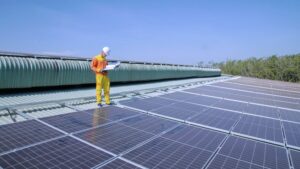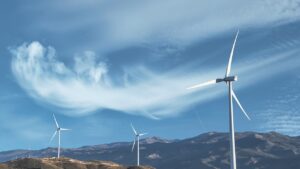Businesses are searching for innovative strategies when it comes to supply chain decarbonization. An effective remedy for it stands to be blue carbon. The term blue carbon describes the carbon that is taken up by coastal ecosystems. It includes salt marshes, seagrass meadows, and mangrove forests. Huge volumes of carbon dioxide can be stored in the atmosphere by these ecosystems. As a result, this aids in the battle against global warming. Moreover, it offers an approach that is natural for companies looking for net-zero emissions to reduce the environmental effect through the supply chains. So, let’s know about it in-depth ahead.
What is Blue Carbon?
A common term for blue carbon habitats is “carbon sinks.” They have extraordinarily high rates of atmospheric carbon dioxide absorption and trapping. The primary blue carbon ecosystems function as follows:
Mangrove Forests
Mangrove forests can be seen with tropical and subtropical coasts. Moreover, the plants are extremely capable of storing CO2. Mangroves first take up carbon dioxide through photosynthesis as they grow. However, the massive root systems of mangroves, buried deep in the coastal soil, also store a substantial amount of carbon. So, over time, this soil becomes extremely carbon-rich. Moreover, experts believe that mangroves may store up to four times as much carbon per acre as conventional inland woodlands.
Seagrass Meadows
Seagrass meadows are vast underwater grasslands. They are found in the shallow coastal regions. The meadows also absorb CO2 from the atmosphere and water with the help of photosynthesis. Additionally, the silt at the bottom of the meadows are also capable of storing carbon. Over hundreds of years, natural processes gradually bury the carbon deeper and deeper. As a result, it prevents its release back into the atmosphere.
Salt Marshes
Salt marshes, which are grassy wetland habitats, exist in bays and estuaries along protected coasts. Year after year, the tall grasses and other flora found in salt marshes absorb carbon dioxide as they expand. The deep root systems in the moist soils capture bits of decomposing plant materials. Moreover, over time, this gradual accumulation results in very carbon-rich soils.
What Are The Benefits of Blue Carbon in Supply Chain Decarbonization?
Blue carbon ecosystem preservation and restoration may directly assist businesses in supply chain decarbonization in several ways:
Carbon Offsetting
Businesses that invest in blue carbon initiatives can partially offset the emissions that they are unable to avoid. It includes replanting mangrove forests and replenishing seagrass beds. It also includes improving salt marsh conservation management. These coastal ecosystems store carbon, which produces carbon credits that businesses may buy to offset their emissions.
Blue carbon initiatives provide additional environmental advantages beyond simple offsetting. They sustain nearby fishing towns, preserve shorelines, and offer habitat for animals. So, this fits with the goals of corporate social responsibility and sustainability.
Supply Chain Resilience
Climate change hazards pose a danger to infrastructure and supply chain activities in coastal areas. Healthy blue carbon ecosystems, however, can function as organic barriers to these effects.
Coastal regions are protected from hurricane winds, waves, and flooding by mangrove trees. It serves as a storm barrier. During severe weather, sediment is stabilized by salt marshes and seagrass beds. As a result, it prevents coastal erosion. So, businesses can boost the resilience of their supply networks by investing in blue carbon.
Sustainable Sourcing
Collaborating with indigenous and local groups that rely on coastal regions for their food and livelihoods is a common aspect of blue carbon efforts. Furthermore, businesses in these initiatives are made to source ethically and sustainably.
Goals for biodiversity and conservation are also related to blue carbon. Restoring coastal habitats achieves the protection of sensitive marine species and ecosystems harmed by pollution and development. Additionally, businesses that prioritize environmental responsibility receive rewards. This tends to be one of the major contributions of blue carbon ecosystems to climate change mitigation.
Also read: How to integrate circular economy in gigafactory supply chains?
Blue Carbon In Supply Chain Decarbonization: Challenges to Overcome
While promising, effectively using blue carbon for supply chain decarbonization faces some hurdles that need addressing:
Measuring Carbon Sequestration
Quantifying exactly how much carbon different blue carbon ecosystems capture and store can be tricky. You need comprehensive monitoring systems in place to accurately measure and verify carbon credits generated. Developing standardized methodologies remains an ongoing scientific effort.
Restoring Coastal Habitats
It’s challenging to rehabilitate degraded blue carbon areas like drained salt marshes or cleared mangrove forests. Concerted conservation work is required to reestablish native vegetation and undo damage from coastal development, pollution, overfishing, and other unsustainable activities.
Restoration projects demand coordination between governments, environmental groups, community organizations, and other stakeholders. Securing adequate funding for labor, supplies, and long-term maintenance is also essential.
Policy Support
Scaling up blue carbon solutions needs supportive policies and regulations from governments. Clear guidelines and financial incentives would encourage more companies to invest in blue carbon offset schemes and habitat restoration initiatives.
International frameworks for carbon credit verification and emissions reporting rules that properly account for blue carbon activities are still evolving. Greater policy clarity would provide more certainty for businesses.
Upfront Investment
While cost-effective long-term, blue carbon projects require significant upfront capital for implementation in supply chain decarbonization. Innovative funding models involving public-private partnerships, carbon markets, green bonds, and impact investors are emerging to help finance these efforts.
Developing new blue carbon methodologies that stack multiple environmental credits could provide more revenue streams to attract investors. However, businesses taking the first-mover risk still face higher initial costs to launch projects.
The Corporate Case Of Blue Carbon in Supply Chain Decarbonization
For companies aiming for supply chain decarbonization, blue carbon offers a compelling nature-based solution with powerful co-benefits beyond just emissions reductions. So, here are some of the key advantages and drivers:
Access to Verified Carbon Offsets
By supporting blue carbon ecosystem conservation and restoration, companies gain a new source of high-quality offsets. It neutralizes emissions they cannot eliminate internally.
Enhanced Brand Image
Purchasing blue carbon is consistent with sustainability leadership, corporate social responsibility, and environmental stewardship. All of these are becoming more and more crucial for a brand’s reputation.
Long-Term Climate Strategy
Blue carbon is one component of a broad, multidimensional strategy. Among the decarbonization tools in the fight against climate change are energy efficiency, renewable energy, and others.
Supply Chain Resilience
Robust coastal environments function as organic barriers against climatic hazards. Furthermore, it safeguards supply chain resources and activities in susceptible coastal areas from tempests, deluges, and degradation.
Environmental Co-Benefits
Broader societal value is created by blue carbon ecosystems’ extra advantages. It includes biodiversity protection, water filtering, wildlife preservation, and also community resources.
Financial Incentives
Companies can benefit from tax credits, subsidies, and new revenue streams from certified offset credits as policies. This is to encourage blue carbon to evolve.
Green Finance Opportunities
Bonds, carbon market financing, sustainability-focused funds, and other ESG investment vehicles can all benefit from investing in blue carbon.
Stakeholder Engagement
Collaborating on blue carbon initiatives facilitates cooperation on common environmental objectives. This is between corporations, governments, non-governmental organizations, and local people.
Even if there are still obstacles to overcome, business support for blue carbon solutions is growing as a convincing countermeasure to climate change.
Conclusion
Blue carbon solutions provide businesses with a cutting-edge, environmentally friendly way to lower emissions. It also improves sustainability and strengthens resilience in the supply chain. However, scaling up these programs requires resolving measurement issues, restoring ecosystems, obtaining funding, and creating supporting policies.
Are you curious to find out more about cutting-edge supply chain decarbonization techniques in supply chains like blue carbon? Attend the Net-Zero Supply Chain Summit on September 12-13, 2024 in Amsterdam, Netherlands. This premier industry event covers vital topics like AI for carbon footprint management, sustainable logistics, renewable energy integration, and nature-based solutions. With expert speakers, vendors showcase, and valuable networking, it’s a must-attend for supply chain and sustainability professionals driving impactful change.





